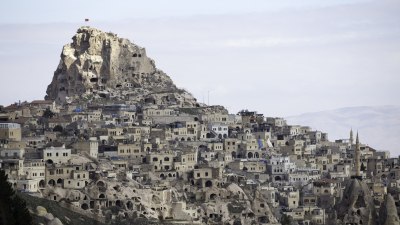The Tokyo of Lost Futures in Murakami’s Mind
Explore the intricate relationship between Haruki Murakami's Tokyo and the concept of lost futures in his works.

Image created with Flux Schnell
Haruki Murakami, a celebrated novelist, has captivated readers globally with his distinctive style and surreal narratives. His works often explore complex themes such as alienation, longing, and the intersection of reality and fantasy. One of the most compelling elements in Murakami's stories is his portrayal of Tokyo—a city that serves as a vibrant backdrop for his characters’ journeys, yet simultaneously represents a landscape of lost futures. In this article, we delve into the captivating realm of Tokyo as depicted in Murakami’s oeuvre, examining how it reflects the characters' inner lives and the broader existential themes of his writing.
The City as a Character
In Murakami's narratives, Tokyo is not merely a setting; it embodies a character in its own right. The city's bustling streets, quiet alleys, and eclectic neighborhoods create a vivid tapestry through which his characters navigate their existential dilemmas. From the lonely protagonist of 'Norwegian Wood' wandering through the streets of Shibuya to the enigmatic women enveloped in the aura of the city in 'Kafka on the Shore,' Tokyo serves as a mirror reflecting the isolation and introspection of Murakami's characters. The urban landscape, with its juxtaposition of modernity and tradition, becomes a backdrop for exploring themes of memory, loss, and the passage of time.
Lost Futures and Nostalgia
Murakami’s Tokyo is often tinged with nostalgia, as characters grapple with their pasts while searching for meaning in the present. The notion of lost futures pervades his stories, contributing to a sense of yearning for what might have been. In 'Kafka on the Shore,' Kafka Tamura’s journey through the city is not just a physical one, but also a quest to reclaim a lost identity and confront unresolved familial conflicts. Meanwhile, in '1Q84,' the parallel worlds that the characters traverse highlight the fragility of their realities and the choices that lead to divergent paths. The streets of Tokyo become a haunting reminder of the dreams and aspirations that remain unfulfilled, amplifying the sense of melancholy that permeates Murakami’s work.
Surrealism and Urban Isolation
The surreal elements in Murakami’s fiction further underscore the theme of lost futures within the urban landscape of Tokyo. Characters frequently encounter bizarre events and fantastical occurrences that challenge their perceptions of reality. This surrealism often acts as a conduit for exploring deeper existential inquiries. In 'The Wind-Up Bird Chronicle,' Toru Okada’s search for his wife leads him into a labyrinthine Tokyo, where reality blurs and the boundaries between the past and present collapse. The city becomes a stage for his inner struggles, mirroring his search for connection and understanding in a world that feels increasingly alienated. The surreal aspects of Murakami's Tokyo invite readers to consider how the mundane and the extraordinary coexist, revealing the existential dilemmas that lie beneath the surface of daily life.
Intertextuality and Cultural Significance
Tokyo, as depicted in Murakami's works, is infused with a wealth of cultural references and intertextuality that enhance its narrative significance. Murakami often weaves elements of Japanese culture, Western literature, and music into his stories, creating a rich tapestry that reflects the global nature of Tokyo itself. The city's cafes, bars, and bookstores serve as gathering places for individuals seeking solace, connection, or inspiration, echoing the author's own experiences and influences. Furthermore, by integrating references to classic literature—from Franz Kafka to F. Scott Fitzgerald—Murakami situates his characters within a broader literary context, reinforcing the idea that their struggles are not isolated but part of a universal human experience. The cultural significance of Tokyo in Murakami's mind is not merely a backdrop; it is a living, breathing entity that informs and shapes his characters’ destinies.
Memory, Time, and the Ephemeral Nature of Existence
Another crucial aspect of Murakami’s portrayal of Tokyo is the exploration of memory and the ephemerality of existence. The city is depicted as a place where time flows differently, with characters often reflecting on their past choices and the fleeting nature of their experiences. In 'Norwegian Wood,' Toru's reminiscences of his youth and his relationships with Naoko and Midori are intertwined with the Tokyo landscape, emphasizing how memory shapes identity. Murakami's characters often find themselves at pivotal moments in their lives, faced with the weight of their decisions, and the city becomes a backdrop for these crossroads. This emphasis on memory and time reminds readers of the impermanence of existence—the idea that our futures are shaped by the ghosts of our pasts, and that the choices we make can reverberate through our lives in unforeseen ways.
The Impact of Modernity
Murakami’s Tokyo embodies the complexities of modernity, where the rapid pace of life contrasts sharply with the profound inner lives of his characters. The juxtaposition of high-tech advancements and the search for authentic human connection creates a sense of disconnection that is pervasive in his narratives. In '1Q84,' the characters inhabit a Tokyo that is simultaneously familiar and strange, reflecting the alienation inherent in urban life. The bustling streets, neon lights, and pervasive technology serve as symbols of modernity's dual nature—offering convenience and connectivity while also fostering isolation and estrangement. This portrayal resonates with contemporary readers, who experience similar tensions in their own lives, navigating the intricacies of modern existence while yearning for a deeper, more meaningful connection.
The Endless Cycle of Lost Futures
In conclusion, Tokyo, as depicted in Haruki Murakami’s work, is a multifaceted entity that embodies the concept of lost futures. Through the lens of his characters' journeys, the city serves as a powerful metaphor for the human experience - a blend of nostalgia, longing, and the ephemeral nature of existence. The surreal elements of his narratives, coupled with rich cultural references, create a distinctive portrayal of Tokyo as a space where dreams collide with harsh realities. As readers traverse the streets of Murakami’s Tokyo, they are invited to reflect on their own lost futures, contemplating the choices that shape their identities and the unresolved yearnings that linger in their hearts. In a world that often feels fragmented and disjointed, Murakami’s Tokyo stands as a testament to the complexities of life, where the past continues to resonate through the present, and where the search for meaning remains an eternal endeavor.











